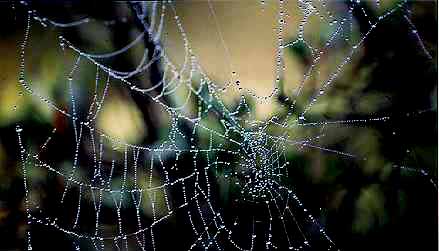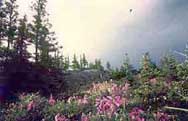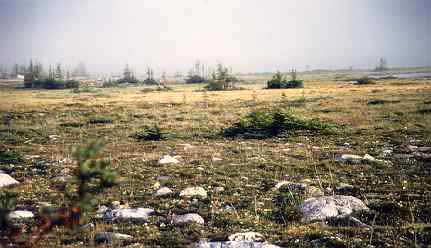 |
Much of this information is taken from Encounters on Hudson Bay by L. Brandson and B. Chartier ALSO, SEE ARCTIC DAWN, A fascinating diary by an early governor of the area, Samuel Hearne |
 |
Much of this information is taken from Encounters on Hudson Bay by L. Brandson and B. Chartier ALSO, SEE ARCTIC DAWN, A fascinating diary by an early governor of the area, Samuel Hearne |
Species adaptation is as intimately bound up with weather as with soil conditions, geology, predation and competition. By going to Churchill Northern Studies Centre website you can get all sorts of information on weather and other pertinant facts.
To prepare for your own trip to Churchill, go to Environment Canada Weather Forecasts

All the orders and most of the families of insects living in Canada are represented in the region. They can be compared to plankton, supporting the entire land-based food chain.
Small predators, including certain species of carnivorous plants as well as insects, amphibians and birds, have evolved to take advantage of the rich food source that insects represent. These, in turn feed other life forms that exist higher on the food chain.
Two frogs that can be found in the region are the wood frog Rana sylvatica and the boreal chorus frog Pseudacris triseriata maculata
|
Fish The fish of the region are classified into three major categories:
|
 |
Bears and other BeastsThe region is habitat of the Lord of the Arctic, the polar bear. These animals exist at the top of a parallel food chain that starts with sea plankton . Their favorite prey is ringed seal. They are also known to catch and feed on beluga whales, although this is less common. Being opportunistic, they will eat almost any other form of meat that comes their way, if they are hungry enough. The Churchill region also represents the northermost limit of the Canadian moose; is one of the routes of the Arctic wolf; provides spring calving grounds for the Cape Churchill Caribou; is used for denning sites by the Arctic and red fox.
|
|
The region also provides habitat to the largest
surviving group of healthy beluga whales. More on that in the
section on whales. Beluga whales feed
on fish, their most common prey the capelin abundant in the region.
While the white whales swim in Churchill River's murky but clean green water, many bird species fly up to the marshes around Churchill to nest and raise their young. Each summer, hundreds of bird watchers find their way north to the Churchill Area.
The following websites are also found in the Birdwatching section. Birds are a rich regional resource. Many species return to the region to partake of the plentiful food source, in the form of insects.
Samuel Hearne describes the local birds, by species.
More on local birds from The Churchill Northern Studies Centre.
Also visit My birdwatching Link
See also Botany
 |
Except in a few protected areas, permafrost stunts the growth of tree roots, while the strong wind blowing off Hudson Bay--carrying granules of ice in the winter, sand and debris in the summer--abrades and sculpts plant life growing in its path. Most species have adapted by dwarfing. Even relatively tall-growing species such as white spruce |
tend to be dwarfed up here and grow far apart as seen in the illustration. These green mounds are called "Krumholtz Formations," and are a single tree with multiple stems coming up from the root.
These white spruce grow among glacial debris. In this very exposed area-susceptible to high wind and dessication--plants survive by dwarfing. The tallest out here in the open is only about 14 feet tall.
|
In a very few sheltered locations, plant life compares to that found further south. Here, in a hidden meadow, accessible after climbing a steep wall of boulders that protect it from the wind, we came upon this magical place. (The speck in the upper right-hand center area is one of the region's infamous insects, probably a biting fly). To learn more about the regional botany, in detail, go to Plants of the region. a detailed and scientifically accurate list. Or go directly to Botany from my own, rather sloppy but enthusiastic point of view. I cover flowers in the summer, fruit in the fall, fall color in this section. |
Return to Churchill Canada Intro Page